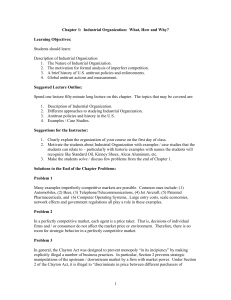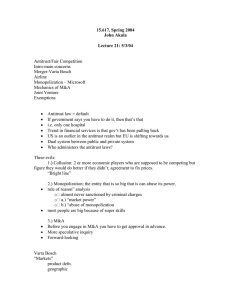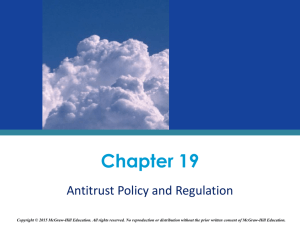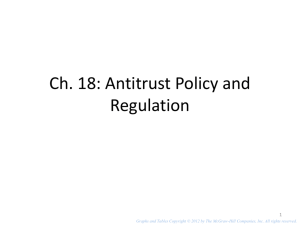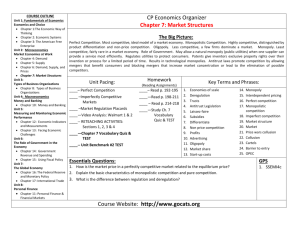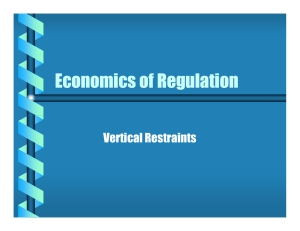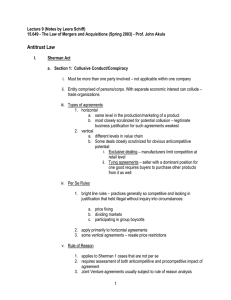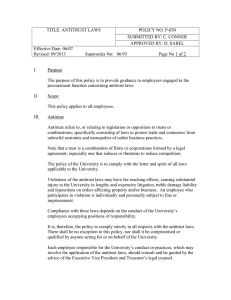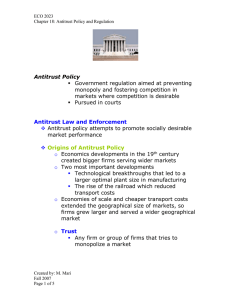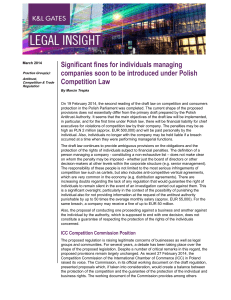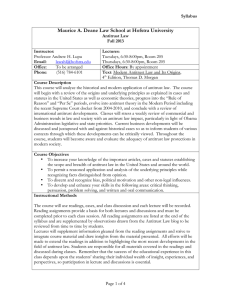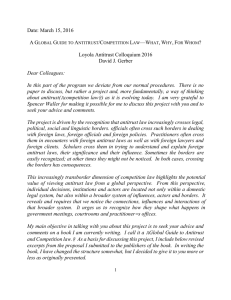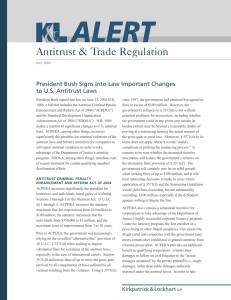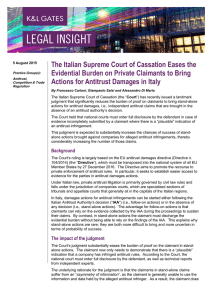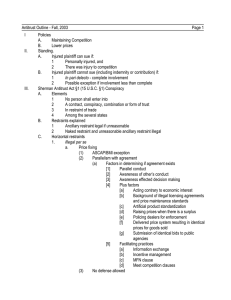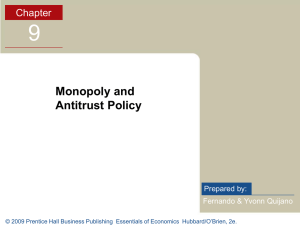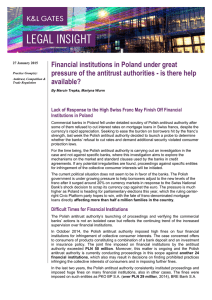American University Department of Economics Comprehensive Examination
advertisement
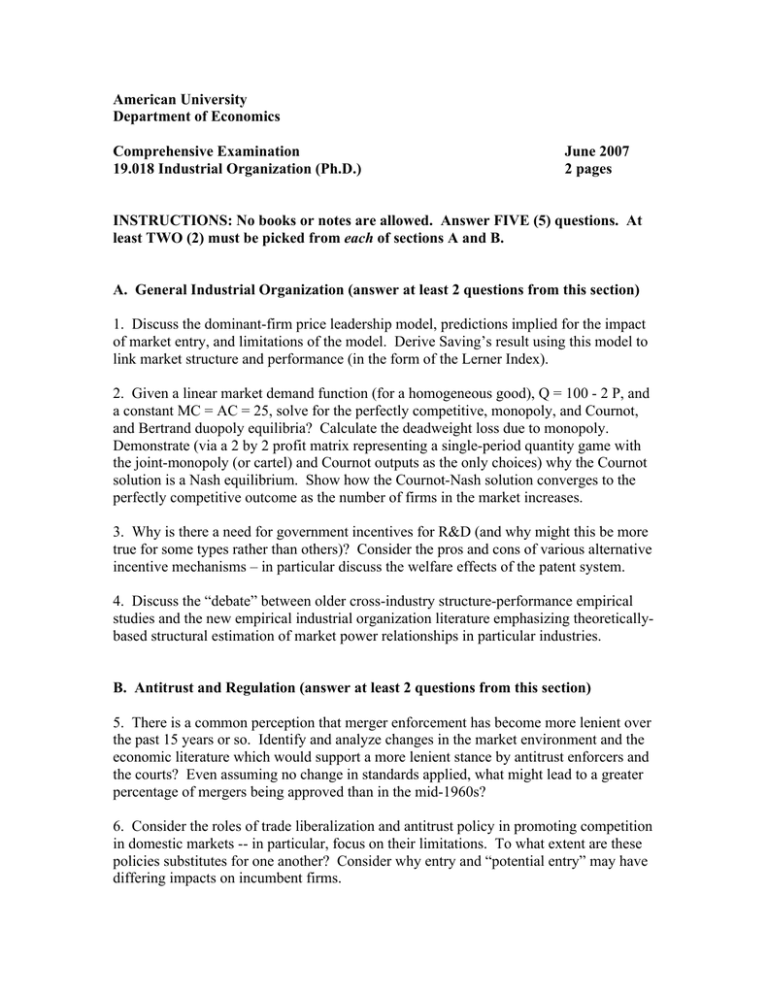
American University Department of Economics Comprehensive Examination 19.018 Industrial Organization (Ph.D.) June 2007 2 pages INSTRUCTIONS: No books or notes are allowed. Answer FIVE (5) questions. At least TWO (2) must be picked from each of sections A and B. A. General Industrial Organization (answer at least 2 questions from this section) 1. Discuss the dominant-firm price leadership model, predictions implied for the impact of market entry, and limitations of the model. Derive Saving’s result using this model to link market structure and performance (in the form of the Lerner Index). 2. Given a linear market demand function (for a homogeneous good), Q = 100 - 2 P, and a constant MC = AC = 25, solve for the perfectly competitive, monopoly, and Cournot, and Bertrand duopoly equilibria? Calculate the deadweight loss due to monopoly. Demonstrate (via a 2 by 2 profit matrix representing a single-period quantity game with the joint-monopoly (or cartel) and Cournot outputs as the only choices) why the Cournot solution is a Nash equilibrium. Show how the Cournot-Nash solution converges to the perfectly competitive outcome as the number of firms in the market increases. 3. Why is there a need for government incentives for R&D (and why might this be more true for some types rather than others)? Consider the pros and cons of various alternative incentive mechanisms – in particular discuss the welfare effects of the patent system. 4. Discuss the “debate” between older cross-industry structure-performance empirical studies and the new empirical industrial organization literature emphasizing theoreticallybased structural estimation of market power relationships in particular industries. B. Antitrust and Regulation (answer at least 2 questions from this section) 5. There is a common perception that merger enforcement has become more lenient over the past 15 years or so. Identify and analyze changes in the market environment and the economic literature which would support a more lenient stance by antitrust enforcers and the courts? Even assuming no change in standards applied, what might lead to a greater percentage of mergers being approved than in the mid-1960s? 6. Consider the roles of trade liberalization and antitrust policy in promoting competition in domestic markets -- in particular, focus on their limitations. To what extent are these policies substitutes for one another? Consider why entry and “potential entry” may have differing impacts on incumbent firms. 7. Discuss the problem of “natural monopoly.” What is it? Why is regulation called for? Why might regulation be desirable at first, but not in later years of an industry? Consider how issues of market definition play a role. Discuss some problems of rate of return regulation, and suggest some alternatives. 8. Discuss issues involved in applying antitrust to industries exhibiting network effects. Consider alternatives which might be used to promote competitive performance.


